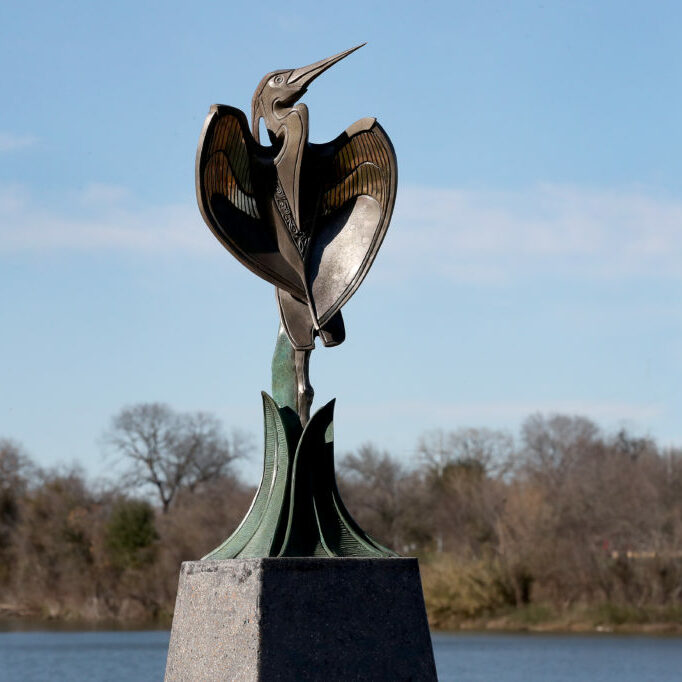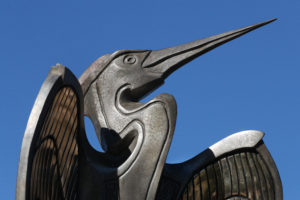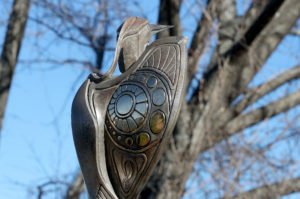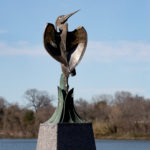Hearts Unfolding
From the artist:
I chose the Heron because of its graceful lines and decided on a powerful, upward-looking pose. I loved how the wings looked like a heart as I began sculpting them, thus the name “Hearts Unfolding.”
Art Deco is one of my favorite design styles because of its sharp lines and crisp angles. Art Nouveau is another favorite for its graceful curves and flowing designs. I tried to incorporate elements of these two styles in this piece. On the back of the wings are polished circles that surround a circular sun design and provide beautiful reflections of the surrounding colors. The chest has playful designs mimicking wind currents.
My hope is that people will see the beauty of the lines and form of this sculpture and appreciate my stylish depiction of this graceful creature.
By John A. Maisano
John Maisano is an artist and sculptor who lives in nearby Austin, Texas. He has been an artist for more than 25 years, but started sculpting in 2001 when he was inspired to sculpt a life-sized bronze ornithomimid dinosaur. He has many artistic skills aside from sculpting including muralist, painter, theatre set designer, and museum exhibit designer! He loves making outdoor sculptures because anyone can see and interact with them. You can see more of his sculptures at Lady Bird Johnson Wildflower Center, Zilker Botanical Garden, Austin Nature & Science Center and many other public places. He is a member of the Texas Sculpture Association and the Texas Society of Sculptors.
View all sculptures by this artist.Did You Know?
- Blue Herons live in both freshwater and saltwater habitats, but also forage in grasslands and agricultural fields.
- They will eat nearly anything within striking distance including fish, reptiles, small mammals, insects, and other birds.
- They grab smaller prey in their strong mandibles or use their dagger-like bills to impale fish. They will often shake them to break or relax the sharp spines before swallowing them.
- Blue Herons nest mainly in trees but you can also find them nested on the ground, in bushes, and on man made structures like duck blinds.
- Their eggs are pale blue and will fade slightly with age.
- If you look carefully when there aren’t too many people about, you will see that there are wild blue herons living along the banks of the Brazos.
Location




